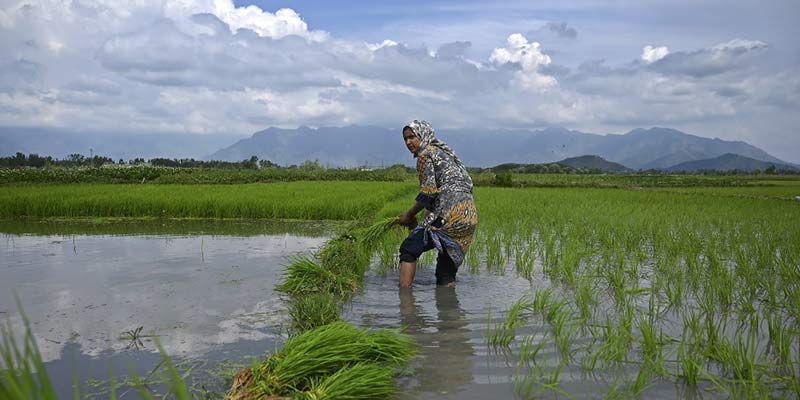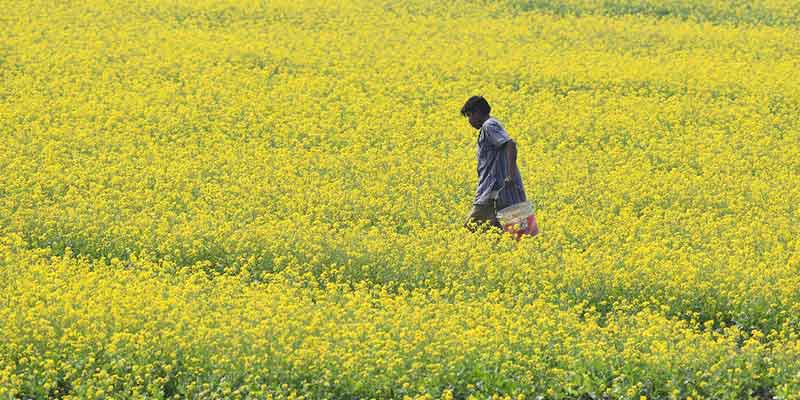- India
- Jul 29
Explainer / Agricultural Census in India
• Agriculture Minister Narendra Singh Tomar launched the Eleventh Agricultural Census (2021-22) to collect data on various parameters, including operational holdings.
• For the first time, the data will be collected through smartphones and tablets.
• The fieldwork of the Census will start in August.
• The tenth edition of the census was conducted with the reference year 2015-16.
• Agriculture Census is conducted every five years, which is being undertaken now after a delay due to COVID-19 pandemic.
Agriculture Census
• Agriculture Census forms part of a broader system of collection of agricultural statistics in India. It is a large-scale statistical operation for collection of requisite data and derivation of quantitative information about the structural characteristics of agriculture in the country.
• Through the Agriculture Census, basic data on important aspects of the agricultural economy of operational holdings in the country is collected.
• The Agriculture Census Scheme is a component of Integrated Scheme on Agriculture Census, economics and statistics under which 100 per cent financial assistance is provided to states/UTs for payment of salaries, office expenses, honoraria etc.
World Census of Agriculture
• Realising the importance of statistics on agriculture, the International Institute of Agriculture conducted the first Programme for the World Census of Agriculture (WCA) in 1930.
• Since 1950, the Food and Agriculture Organisation (FAO) of the United Nations has been preparing and advocating the decennial World Programme for the Census of Agriculture (WCA). Under the leadership of FAO, country participation in the WCA programme has increased over time. The present round of the Census programme (WCA 2020) covers agricultural censuses to be carried out by countries between 2016 to 2025.
• Member countries provide the reports of their agricultural censuses to the FAO Statistics Division. At the end of each round of the WCA, FAO Statistics Division publishes consolidated information on the structure of agriculture, for various countries.
Evolution of Land Record System
• India is one of the few countries in the world which has developed a sound system of land records including village maps which dates back to very early times. In the 16 century, Sher Shah initiated land settlement operations for assessment and collection of land revenue.
• This was later systemised during the reign of Akbar and further reformed during the British period with a view to improve land revenue system and augment the revenue. These changes resulted in the development of two major types of land revenue systems.
• A system of permanent settlement was introduced where designated private landlords acted as intermediaries and enjoyed limited rights of private property. While in large parts of the country, a system of temporary settlement (Ryatwari system) was introduced. Many changes were made in these two systems during the course of the 19th century.
• After Independence, the various land laws were introduced to bring the farmers and state into direct contact. The gradual evolution of the land systems in the country necessitated the maintenance of the village forms and registers giving details of the land held, various conditions under which they are held. A regular system of revenue administration was established for the purpose. These forms and registers in vogue for the maintenance of land records in different states constituted the basis for land utilisation, crop and irrigation statistics.
• Due to the dominant position of the agriculture sector in the Indian economy, collection and maintenance of agricultural statistics assumes importance, particularly, in respect of statistics relating to the agricultural holdings. The initiation of various land reform measures adopted since Independence, necessitated the maintenance of detailed and up-to-date land records.
• The land records maintained in the forms and registers at village level became essential for agricultural planning and development as they constitute the basis for land utilisation, crop and irrigation statistics.
• The National Commission on Agriculture, after examining the various alternatives for collection of Agricultural Statistics concluded that the best method of collection of such statistics was by way of land records. In this process, the Patwari (Village Accountant), who is primarily responsible for maintenance of land records was considered to be the most suitable person who undertakes the job of crop inspection.
• The Commission concluded that the basic structure for collection of agricultural statistics could be improved by enabling the Patwari to do his job better and other revenue officials at the village and taluk/tehsil level to devote adequate attention to the collection of agriculture statistics.
• The architects of the Agricultural Census thought it prudent to build the design of the Agricultural Census by taking advantage of existing system of land records in the country. These land records relate to record of ownership of land and season-wise area enumeration for crops. Such detailed land records are maintained in about 91 per cent of the operated area of the country.
• In the remaining 9 per cent area of the country, covering north-eastern States, West Bengal, Kerala and Odisha, an approach of household inquiry is followed.
First Agricultural Census during 1970-71
• In India, the Department of Agriculture and Farmers Welfare has been organising Agricultural Census since 1970-71 in collaboration with states and Union Territories as part of programme of World Census of Agriculture.
• In the two Agricultural Censuses, in 1950 and 1960, data required for the World Agricultural Census were collected through sample surveys carried out by the erstwhile Directorate of National Sample Survey (now called ‘National Sample Survey Office’) which gave estimates for the country as a whole and also for states.
• From the 1970-71 Census, the methodology adopted was complete enumeration wherein data available in the land records were re-tabulated which was in line with the method recommended by the FAO.
• In the non-land record states, where comprehensive land records were not maintained, the data were collected through sample surveys.
• Due to changes taking place in Indian Agriculture at a very fast pace, the National Commission on Agriculture, in their report submitted in 1976, recommended that the Agricultural Census be conducted on a quinquennial (five year) basis. Accordingly, the second Agricultural census was conducted with 1976-77 as the reference year.
• So far, 10 Agriculture Censuses have been conducted since 1970-71.
The main phases of the Census
• The reference period in Agriculture Census is the agriculture year starting from July to June.
• The basic unit of data collection in Agriculture Census is the operational holding.
• Periodic Agriculture Census is important as it is the main source of information in the country on basic characteristics of operational holdings such as land use, cropping pattern, irrigation status and tenancy particulars.
• Census also provides the basis for development of a comprehensive integrated national system of agricultural statistics and has links with various components of national statistical system.
• The constituent activities of the Agriculture Census Programme are carried out in three distinct phases which are statistically linked together. The Agriculture Census data is collected following a Census-cum-Sample Survey approach, after completion of the reference year.
• During Phase–1 of the Census, data on primary characteristics of operational holdings, like number of holdings and area operated by different size class (marginal, small, semi-medium, medium and large), social groups (SC, ST, Others), gender (male/female), types of holding (individual, joint and institutional), etc is collected.
• The Phase-2 of the Census collects data on detailed characteristics of operational holdings such as, land use, irrigation status, tenancy particulars, cropping pattern, etc.
• Phase-III of Agriculture Census, (referred as Input Survey) is conducted as a follow up survey to the Agriculture Census (reference year as next Agriculture year to that of the Agriculture Census) to collect data on input use pattern of operational holdings in the country.
• Time series data generated through the Agriculture Census provides valuable information on structural changes that take place over time in the agriculture sector.
Use of smartphones for data collection
In the Eleventh Agricultural Census, data collection for the Agricultural Census will be conducted on smartphones and tablets so that data is available in time. Most of the states have digitised their land records and surveys, which will further accelerate the collection of Agricultural Census data. The use of digitised land records and the use of mobile apps for data collection will enable the creation of a database of operational holdings in the country.
Manorama Yearbook app is now available on Google Play Store and iOS App Store





